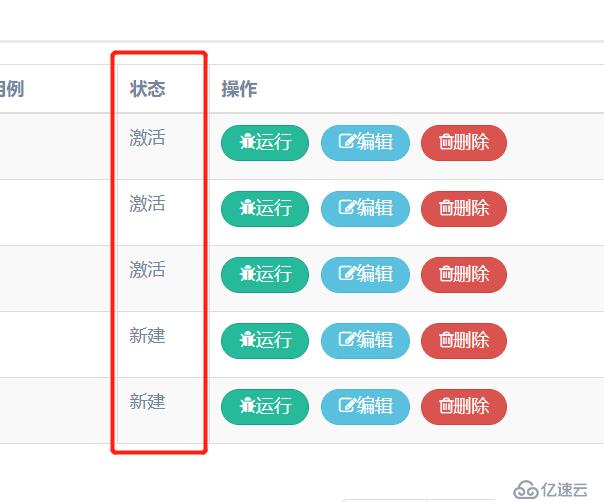这期内容当中小编将会给大家带来有关如何进行Mapper多表关联查询,文章内容丰富且以专业的角度为大家分析和叙述,阅读完这篇文章希望大家可以有所收获。
select p.id, p.create_time, p.update_time, p.create_user, p.update_user, p.project_name, p.test_user,
p.dev_user, p.simple_desc, p.other_desc, p.project_code, p.belong_env_id, p.status_id,u.status_name,u.description from projectinfo_temp p LEFT JOIN usestatus u on p.status_id = u.id@ToString
public class ProjectinfoTemp {
private Integer id;
private Date createTime;
private Date updateTime;
private String createUser;
private String updateUser;
private String projectName;
private String testUser;
private String devUser;
private String simpleDesc;
private String otherDesc;
private String projectCode;
private Integer belongEnvId;
private Integer statusId;
/**
* 关联状态表 激活状态
*/
private Usestatus usestatus;/**
*
* @author liwen406
* @date 2019-04-21 09:12
*/
@ToString
public class Usestatus {
private Integer id;
private String statusName;
private String description;模仿写法
<sql id="WithBase_Column_List" > p.id, p.create_time, p.update_time, p.create_user, p.update_user, p.project_name, p.test_user, p.dev_user, p.simple_desc, p.other_desc, p.project_code, p.belong_env_id, p.status_id,u.status_name,u.description </sql>
<select id="selectByExample" resultMap="BaseResultMap" parameterType="com.apitest.pojo.ProjectinfoTempExample" >
select
<if test="distinct" >
distinct
</if>
<include refid="Base_Column_List" />
from projectinfo_temp
<if test="_parameter != null" >
<include refid="Example_Where_Clause" />
</if>
<if test="orderByClause != null" >
order by ${orderByClause}
</if>
</select>
<select id="selectByExamplestart" resultMap="WithBaseResultMap" >
select
<if test="distinct" >
distinct
</if>
<include refid="WithBase_Column_List" />
from projectinfo_temp p LEFT JOIN usestatus u on p.status_id = u.id
<if test="_parameter != null" >
<include refid="Example_Where_Clause" />
</if>
<if test="orderByClause != null" >
order by ${orderByClause}
</if>
</select><div class="x_content">
<table id="datatable" class="table table-striped table-bordered">
<thead>
<tr>
<th class="table-title">应用编号</th>
<th class="table-title">应用名称</th>
<th class="table-title">测试负责人</th>
<th class="table-title">开发负责人</th>
<th class="table-title">模块/接口/用例</th>
<th class="table-title">状态</th>
<th class="table-title">操作</th>
</tr>
</thead>
<tbody>
<tr th:each="pagefo:${pageInfo.list}">
<td th:text="${pagefo.projectCode}"></td>
<td th:text="${pagefo.projectName}"></td>
<td th:text="${pagefo.testUser}"></td>
<td th:text="${pagefo.devUser}"></td>
<td th:text="${pagefo.belongEnvId}"></td>
<td th:text="${pagefo.usestatus.statusName}"></td>
<td>
<a type="button" class="fa fa-bug btn btn-round btn-success"
th:href="@{/run/}+${pagefo.projectCode}">运行</a>
<a type="button" class="fa fa-edit btn btn-round btn-info"
th:href="@{/cache/editProjectInf/}+${pagefo.projectCode}">编辑</a>
<a type="button" class="fa fa-trash-o btn btn-round btn-danger"
th:href="@{/deleteProjectinfoTemp/}+${pagefo.projectCode}">删除</a>
</td>
</tr>
</tbody>
</table>
<div class="box-footer">
<div class="pull-left">
<div class="form-group form-inline">
<span th:text="'共'+${pageInfo.getPages()}+'页'"></span>,
<span th:text="'当前为'+${pageInfo.getPageNum()}+'页'"></span>
<span th:text="'总'+${pageInfo.getTotal()}+'条记录'"></span>
</div>
</div>
<div class="box-tools pull-right">
<ul class="pagination">
<li><a th:href="@{/cache/project_list_cache(start=0)}"
aria-label="Previous">[首 页]</a></li>
<li><a th:href="@{/cache/project_list_cache(start=${pageInfo.pageNum-1})}">[上一页]</a>
</li>
<li><a th:href="@{/cache/project_list_cache(start=${pageInfo.pageNum+1})}">[下一页]</a>
</li>
<li><a th:href="@{/cache/project_list_cache(start=${pageInfo.pages})}"
aria-label="Next">[尾 页]</a></li>
</ul>
</div>
</div>
</div>
上述就是小编为大家分享的如何进行Mapper多表关联查询了,如果刚好有类似的疑惑,不妨参照上述分析进行理解。如果想知道更多相关知识,欢迎关注亿速云行业资讯频道。
亿速云「云服务器」,即开即用、新一代英特尔至强铂金CPU、三副本存储NVMe SSD云盘,价格低至29元/月。点击查看>>
免责声明:本站发布的内容(图片、视频和文字)以原创、转载和分享为主,文章观点不代表本网站立场,如果涉及侵权请联系站长邮箱:is@yisu.com进行举报,并提供相关证据,一经查实,将立刻删除涉嫌侵权内容。